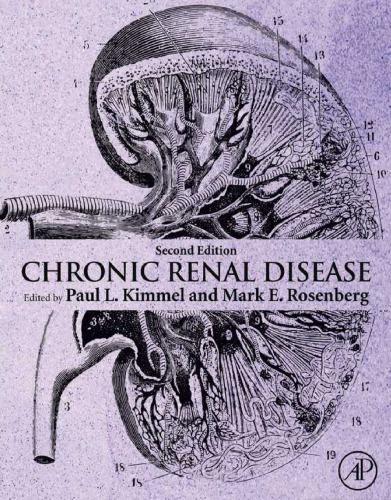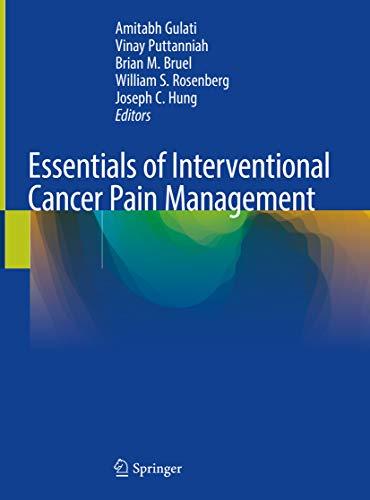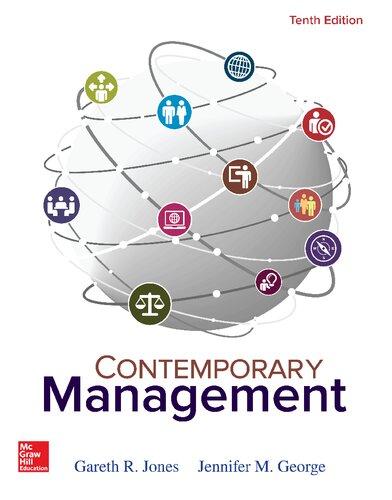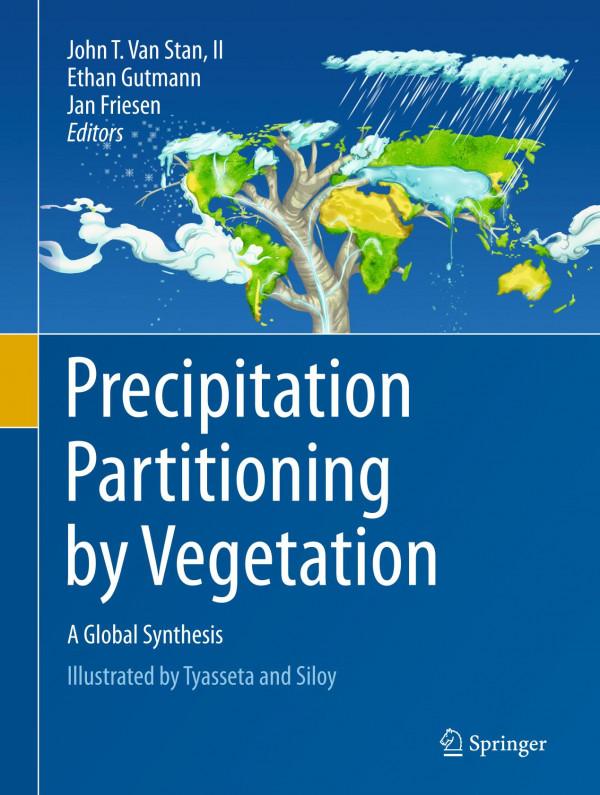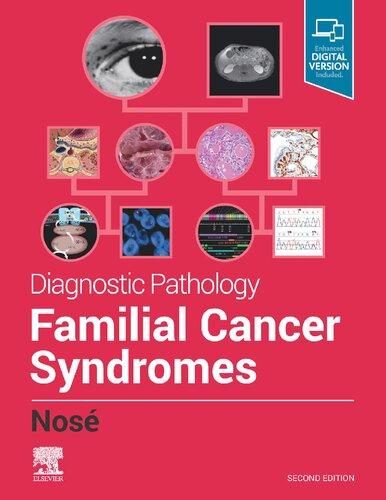Renal Cancer
Contemporary Management
Second Edition
Editors John A. Libertino
Professor of Urology
Tufts University School of Medicine Boston, MA USA
Chairman
Department of Urology
MGH Cancer Center
Emerson Hospital Concord, MA USA
Jason R. Gee
Associate Professor of Urology
Tufts University School of Medicine Boston, MA USA
Department of Urology
MGH Cancer Center
Emerson Hospital Concord, MA USA
ISBN 978-3-030-24377-7
ISBN 978-3-030-24378-4 (eBook) https://doi.org/10.1007/978-3-030-24378-4
© Springer Nature Switzerland AG 2020
This work is subject to copyright. All rights are reserved by the Publisher, whether the whole or part of the material is concerned, specifically the rights of translation, reprinting, reuse of illustrations, recitation, broadcasting, reproduction on microfilms or in any other physical way, and transmission or information storage and retrieval, electronic adaptation, computer software, or by similar or dissimilar methodology now known or hereafter developed.
The use of general descriptive names, registered names, trademarks, service marks, etc. in this publication does not imply, even in the absence of a specific statement, that such names are exempt from the relevant protective laws and regulations and therefore free for general use. The publisher, the authors, and the editors are safe to assume that the advice and information in this book are believed to be true and accurate at the date of publication. Neither the publisher nor the authors or the editors give a warranty, expressed or implied, with respect to the material contained herein or for any errors or omissions that may have been made. The publisher remains neutral with regard to jurisdictional claims in published maps and institutional affiliations.
This Springer imprint is published by the registered company Springer Nature Switzerland AG The registered company address is: Gewerbestrasse 11, 6330 Cham, Switzerland
Dedicated to Dr. Harris Berman, M.D., Dean of Tufts University School of Medicine
A great Leader in medical education and healthcare delivery
6
Molecular Imaging for Renal Cell Carcinoma
Jian Q. Yu and Yamin Dou
Introduction
Locoregional Metastasis
Distant Metastasis
Lung Metastasis
Bone Metastasis
Prognostic Values of FDG PET for RCC
Monitoring Therapeutic Response
Novel Tracers and Future
for Clear Cell RCC
Conclusion
7 Interventional Radiology and Angioinfarction:
Embolization of Renal Tumors
Sebastian Flacke and Shams Iqbal Indications for Renal Artery Embolization
Superselective Embolization
Clinical Value of Transcatheter Tumor Embolization
Preoperative Embolization
Palliative Embolization
T. Ristau, Anthony Corcoran, Marc C. Smaldone, Robert G. Uzzo, and David Y. T. Chen
11 History of Renal Surgery for Cancer
Brendan M. Browne and Karim Joseph Hamawy
The Golden Era of Radical Nephrectomy
Rise of Partial Nephrectomy
12 The Surgical Approaches to Renal Masses and Their Impact on Postoperative Renal Function
John A. Libertino and Robert Hamburger
Nephrectomy Versus Partial Nephrectomy: The Rationale for Partial Nephrectomy and Preservation of Renal Function
Illustrative Case: Large Tumor in Solitary Kidney
Role of Preoperative CKD on Postoperative Renal Function Following Partial Nephrectomy
Role of Warm Ischemia on Postoperative Renal Function Following Partial Nephrectomy
Role of Volume on Postoperative Renal Function Following Partial Nephrectomy 211
Combined Role of Ischemia and Volume on Renal Function Following Partial Nephrectomy 212
Conclusion 213
Surgical Approach to Multifocal or Bilateral Renal Tumors . . . . . 213
Marianne M. Casilla-Lennon, Patrick A. Kenney, Matthew Wszolek, and John A. Libertino
Epidemiology
T1b Tumors 225
>T1 Tumors 225
Preserving Renal Function: The Rationale Behind PN
Underutilization of PN 227
Adoption of Minimally Invasive Techniques
Objective Analysis of Tumor Complexity.
14
15 Surgery for Renal Cell Carcinoma with Thrombus
Retrohepatic, Supradiaphragmatic, and Atrial Tumor Thrombus
Venovenous Bypass (Caval-Atrial Shunt)
Liver Mobilization
Traditional Cardiopulmonary Bypass (Median Sternotomy)
Cardiopulmonary Bypass (Minimally Access Approach).
Comparative Effectiveness of Median Sternotomy
Versus Minimal Access Cardiopulmonary Bypass and Circulatory Arrest for Resection of Renal Cell Carcinoma with Inferior Vena Caval Extension
Occluded Vasculature Management
Caval Wall Resection and Caval Interruption
Minimally Invasive Techniques and Tumor Thrombectomy
A Novel Approach: Combination of Interventional
Radiologic Tumor Extraction and Surgery
Partial Nephrectomy and Tumor Thrombus
Neoadjuvant Chemotherapy and Tumor Thrombus
Tumor Thrombectomy and Metastectomy
International Renal Cell Carcinoma: Venous Thrombus Consortium (IRCC-VTC)
References
16 Role of Lymphadenectomy in Renal Cell Cancer
Mattias Willem van Hattem, Eduard Roussel, Hendrik Van Poppel, and Maarten Albersen Introduction
Anatomy of Regional Lymph Nodes
of LND for RCC and Templates
Morbidity of LND
False-Positive and False-Negative CT Findings
Prevalence of Lymph Node metastases
Predicting Lymph Node Involvement
Protocols and Nomograms
Intra-Operative Lymph Node Assessment 287
Sentinel Lymph Nodes
When to Perform a LND?
Localized Disease (cT1abN0M0)
Localized Disease: Larger Tumours (cT2abN0M0) 288
Locally Advanced Disease (cT3-T4N0M0)
Clinical Node-Positive (cT1-4, N+M0) RCC
Regional Lymph Node Recurrence 289
Distant Metastasis and Cytoreduction (cTanyNanyM1)
Conclusion and Future Research
17 Role of Surgery in Locally Recurrent and Metastatic
Andrew G. McIntosh, Eric C. Umbreit, and Christopher G. Wood Kidney Cancer and Recurrence.
Grading System 347
Notes on Staging Systems
Other Prognostic Factors
A Word About Prediction Tools
Preoperative Models
Postoperative Models
Metastatic RCC Models
Conclusion
References
21 Postoperative Surveillance Protocols for Renal Cell Carcinoma
Megan M. Merrill and Jose A. Karam
Introduction
Natural History of RCC and Recurrence Patterns
Distant Recurrence
or Partial Nephrectomy in
Current NCCN and AUA Guidelines
Surveillance for Hereditary RCC
Surveillance Following Ablative Therapies for RCC 377
Radiofrequency Ablation
Cryoablation
Recommendations for Surveillance Following Radiofrequency Ablation or Cryoablation
The Future of Surveillance
The Incorporation of Molecular Markers into Surveillance Strategies
Use of F-18 Fluorodeoxyglucose Positron Emission
Tomography in Surveillance and Reducing the Risk of Radiation Exposure
Cost of Surveillance 381
Conclusion
References
22 Role of Radiation Therapy in Renal Cancer
Andrea McKee, Arul Mahadevan, and Timothy Walsh
Introduction 387
Eddy J. Chen
25
Neoadjuvant Therapy: Current Status
Integrated Therapy for Metastatic Disease
Cytoreductive Nephrectomy
Treatment Chronology: Upfront Nephrectomy Versus Presurgical Targeted Therapy
Conclusion
Defining an Individualized Treatment Strategy for Metastatic Renal Cancer
Mamta Parikh, Jerad Harris, Sigfred Ian Alpajaro, Primo N. Lara Jr., and Christopher P. Evans
Relevant
Prognostication
Contributors
Alejandro Abello, MD Department of Urology/Yale School of Medicine, Yale New Haven Hospital, New Haven, CT, USA
Jalil Afnan, MD, MRCS Department of Radiology, Lahey Hospital & Medical Center, Burlington, MA, USA
Maarten Albersen, MD Department of Urology, UZ Leuven, Leuven, Belgium
Sigfred Ian Alpajaro, MD Department of Surgery, Section of Urology, University of Santo Tomas Hospital, Manila, Philippines
Mark Wayne Ball, MD Center for Cancer Research, NCI, NIH, Urologic Oncology Branch, Bethesda, MD, USA
Brendan M. Browne, MD, MS Department of Urology, Lahey Hospital and Medical Center, Burlington, MA, USA
Marianne M. Casilla-Lennon, MD Department of Urology, Yale New Haven Health, New Haven, CT, USA
David Y. T. Chen, MD, FACS Department of Surgical Oncology, Division of Urology, Fox Chase Cancer Center – Temple University Health System, Philadelphia, PA, USA
Eddy J. Chen, MD Division of Hematology/Oncology, Massachusetts General Hospital, Harvard Medical School, Boston, MA, USA
MGH Cancer Center, Emerson Hospital, Concord Mass, USA
Anthony Corcoran, MS, MD Department of Urology, NYU Winthrop Hospital, Garden City, NY, USA
Nicholas M. Donin, MD Department of Urology, Division of Urologic Oncology, David Geffen School of Medicine at UCLA, Los Angeles, CA, USA
Yamin Dou, MD Department of Radiology, Tufts School of Medicine, Lahey Hospital and Medical Center, Burlington, MA, USA
Alexandra Drakaki, MD, PhD David Geffen School of Medicine of UCLA, Institute for Urologic Oncology, Los Angeles, CA, USA
Christopher P. Evans, MD Department of Urologic Surgery, UC Davis, Sacramento, CA, USA
Sebastian Flacke, MD, PhD Department of Radiology, Lahey Hospital and Medical Center, Burlington, MA, USA
Franto Francis, MD, PhD Department of Pathology, University of Texas Southwestern Medical Center, Dallas, TX, USA
Jason R. Gee, MD Tufts University School of Medicine, Boston, MA, USA Department of Urology, MGH Cancer Center, Emerson Hospital, Concord, MA, USA
Sanaz Ghafouri, MD Department of Internal Medicine, Ronald Reagan UCLA Medical Center, Los Angeles, CA, USA
Serge Ginzburg, MD Urology Institute of Southeastern Pennsylvania, Einstein Hospital System, Philadelphia, PA, USA Department of Urology, Fox Chase Cancer Center, Philadelphia, PA, USA
Christopher R. Haas, MD Department of Urology, New York-Presbyterian, Columbia University Irving Medical Center, Herbert Irving Pavilion, New York, NY, USA
Karim Joseph Hamawy, MD Department of Urology, Lahey Hospital and Medical Center, Burlington, MA, USA
Robert Hamburger, MD Department of Medicine, Boston University School of Medicine, Boston VA Health Care System, Boston, MA, USA
Jerad Harris, BS Department of Urologic Surgery, UC Davis, Sacramento, CA, USA
Mattias Willem van Hattem, MD Department of Urology, UZ Leuven, Leuven, Belgium
William C. Huang, MD Department of Urology, Division of Urologic Oncology, NYU Langone Medical Center, New York, NY, USA
Shams Iqbal, MD Department of Radiology, Lahey Hospital and Medical Center, Burlington, MA, USA
David C. Johnson, MD, MPH Department of Veterans Affairs/UCLA National Clinician Scholars Program, West Los Angeles Veterans Affairs Hospital, Los Angeles, CA, USA
Jose A. Karam, MD, FACS Urology and Translational Molecular Pathology, MD Anderson Cancer Center, Houston, TX, USA
Michael W. Kattan, PhD Department of Quantitative Health Sciences, Cleveland Clinic, Cleveland, OH, USA
Kristen Kelly, MD Department of Internal Medicine, Ronald Reagan UCLA Medical Center, Los Angeles, CA, USA
Patrick A. Kenney, MD Department of Urology/Yale School of Medicine, Yale New Haven Hospital, New Haven, CT, USA
Alexander Kutikov, MD Division of Urology and Urologic Oncology, Department of Urology, Fox Chase Cancer Center, Temple University School of Medicine Center, Philadelphia, PA, USA
Primo N. Lara Jr., MD Hematology/Oncology, Department of Internal Medicine, UC Davis Comprehensive Cancer Center, Sacramento, CA, USA
UC Davis School of Medicine, Sacramento, CA, USA
John A. Libertino, MD Tufts University School of Medicine, Boston, MA, USA
Department of Urology, MGH Cancer Center, Emerson Hospital, Concord, MA, USA
Arul Mahadevan, MD Department of Radiation Oncology, Sophia Gordon Cancer Center, Lahey Clinic Medical Center, Burlington, MA, USA
Andrew G. McIntosh, MD Department of Urology, University of Texas MD Anderson Cancer Center, Houston, TX, USA
Andrea McKee, MD Department of Radiation Oncology, Sophia Gordon Cancer Center, Lahey Clinic Medical Center, Burlington, MA, USA
James M. McKiernan, MD Department of Urology, New York-Presbyterian, Columbia University Irving Medical Center, Herbert Irving Pavilion, New York, NY, USA
Megan M. Merrill, DO Department of Urology, Kaiser Permanente South Sacramento, Sacramento, CA, USA
Pavlos Msaouel, MD Department of Genitourinary Medical Oncology, UT MD Anderson Cancer Center, Houston, TX, USA
Allan Pantuck, MD, MS Institute of Urologic Oncology, Department of Urology, David Geffen School of Medicine at UCLA, Los Angeles, CA, USA
Mamta Parikh, MD, MS Hematology/Oncology, Department of Internal Medicine, UC Davis Comprehensive Cancer Center, Sacramento, CA, USA
Egor Parkhomenko, MD Department of Urology, Boston University School of Medicine, Boston, MA, USA
Peter A. Pinto, MD NIH Clinical Center, Urologic Oncology Branch, Bethesda, MD, USA
Hendrik Van Poppel, MD, PhD Department of Urology, UZ Leuven, Leuven, Belgium
Benjamin T. Ristau, MD, MHA Department of Surgery/Division of Urology, UConn Health, Farmington, CT, USA
Jeremy A. Ross, MD Cancer Medicine, Fellowship Program, UT MD Anderson Cancer Center, Houston, TX, USA
Eduard Roussel, MD Department of Urology, UZ Leuven, Leuven, Belgium
Stephen B. Schloss, MD Department of Urology, MGH Cancer Center, Emerson Hospital, Concord, MA, USA
Shanta T. Shepherd, MD Department of Urology, Boston University School of Medicine, Boston, MA, USA
Sana N. Siddiqui, DO, MS Department of Urology, New York-Presbyterian, Columbia University Irving Medical Center, Herbert Irving Pavilion, New York, NY, USA
Marc C. Smaldone, MD, MSHP, FACS Department of Surgery, Fox Chase Cancer Center – Temple University Health System, Philadelphia, PA, USA
Kristian D. Stensland, MD, MPH Division of Urology, Lahey Hospital and Medical Center, Burlington, MA, USA
Nizar M. Tannir, MD, FACP Genitourinary Medical Oncology, UT MD Anderson Cancer Center, Houston, TX, USA
Jaclyn A. Therrien, DO Section Head Body Imaging, Department of Radiology, Lahey Hospital & Medical Center, Burlington, MA, USA
Eric C. Umbreit, MD Department of Urology, University of Texas MD Anderson Cancer Center, Houston, TX, USA
Robert G. Uzzo, MD Department of Surgical Oncology, Division of Urology, Fox Chase Cancer Center – Temple University Health System, Philadelphia, PA, USA
Christoph Wald, MD, PhD, MBA Department of Radiology, Lahey Hospital & Medical Center, Burlington, MA, USA
Timothy Walsh, MD Department of Radiation Oncology, Tufts University School of Medicine, Boston, MA, USA
David S. Wang, MD Department of Urology, Boston University School of Medicine, Boston, MA, USA
Christopher G. Wood, MD, FACS Department of Urology, University of Texas MD Anderson Cancer Center, Houston, TX, USA
Chad Wotkowicz, MD Department of Urology, Lahey Clinic Medical Center, Burlington, MA, USA
Matthew Wszolek, MD Department of Urology, Massachusetts General Hospital, Boston, MA, USA
Jian Q. Yu, MD, FRCPC Department of Diagnostic Imaging, Fox Chase Cancer Center, Philadelphia, PA, USA
Ming Zhou, MD Department of Pathology and Laboratory Medicine, Tufts Medical Center, Boston, MA, USA
Tufts Medical Center and Tufts School of Medicine, Boston, MA, USA
Epidemiology, Screening, and Clinical Staging
Sana N. Siddiqui, Christopher R. Haas, and James M. McKiernan
Introduction to Epidemiology
Kidney cancer among adults includes malignant tumors arising from the renal parenchyma and renal pelvis, but the differential of a renal mass should also include benign tumors and inflammatory causes as summarized in Table 1.1. Tumors arising from the renal pelvis are mostly of the urothelial cell type and comprise less than 10% of kidney carcinomas. Renal cell carcinoma (RCC), also known as renal cell adenocarcinoma, accounts for 90% of kidney carcinomas and is much more common than benign tumors or other malignant cancers [1]. Renal cell carcinoma is divided into a variety of histologic subtypes, which may differ in clinical features and prognosis. The most common form of RCC is the clear cell type, comprising 75% of new cases; this is followed by the papillary, chromophobe, medullary, and collecting duct subtypes which make up 10%, 5%, 1%, and 1%, respectively [2].
Kidney cancer is the fourteenth most common cancer worldwide, with over 400,000 new cases in 2018. It is the ninth most commonly occurring cancer in men and the fourteenth most commonly occurring cancer in women [3]. The highest incidence rates can be found in Northern and Eastern
Department of Urology, New York-Presbyterian, Columbia University Irving Medical Center, Herbert Irving Pavilion, New York, NY, USA
Europe, as well as North America [4]. In the United States, kidney cancer ranks as the eighth most commonly diagnosed cancer, where approximately 1.7% of men and women will be diagnosed with kidney or renal pelvis cancer at some point in their lifetime [5]. According to the Surveillance, Epidemiology, and End Results (SEER) program, the prevalence of kidney and renal pelvis cancer in 2015 was estimated to be 505,380 in the United States. The National Cancer Institute (NCI) reports that within the United States, there will be an estimated 65,340 new cases in 2018 with a male-to-female predominance of about 2:1 and almost 15,000 deaths due to kidney and renal pelvis cancers. As a result, kidney cancers account for 3.8% of all new cancer cases and 2.5% of all cancer deaths, and remain the twelfth leading cause of cancer death. Among all new diagnoses of kidney cancer in the United States, 5-year survival is 76% [5].
Incidence and Mortality Rates over Time
From 1992 to 2015, the incidence of kidney cancer in United States increased at 2.4%/year; however, this increase has slowed to a near plateau from 2008 to 2015 [6]. This increase in RCC incidence was most notable in localized and regional disease rather than metastatic RCC in which the overall incidence has been stable. Incidence-based mortality rates increased from S. N. Siddiqui · C. R. Haas (*) · J. M. McKiernan
e-mail: siddiqs1@amc.edu; crh2109@cumc. columbia.edu
1 © Springer Nature Switzerland AG 2020 J. A. Libertino, J. R. Gee (eds.), Renal Cancer, https://doi.org/10.1007/978-3-030-24378-4_1
Table 1.1 Differential diagnosis of a renal mass
Malignant
Renal cell carcinoma
Clear cell
Papillary
Chromophobe
Collecting duct carcinoma
Urothelium derived
Urothelial cell carcinoma
Squamous cell carcinoma
Adenocarcinoma
Sarcoma
Leiomyosarcoma
Liposarcoma
Angiosarcoma
Hemangiopericytoma
Malignant fibroid histiocytoma
Synovial sarcoma
Osteogenic sarcoma
Clear cell sarcoma
Rhabdomyosarcoma
Wilms tumor
Primitive neuroectodermal tumor
Carcinoid
Lymphoma
Metastasis
Invasion by adjacent neoplasm
Benign
Simple cyst
Angiomyolipoma
Oncocytoma
Renal adenoma
Metanephric adenoma
Cystic nephroma
Mixed epithelial/stromal tumor
Reninoma
Leiomyoma
Fibroma
Hemangioma
Vascular malformation
Pseudotumor
1992 and peaked in 2001, but then started to decline with the sharpest decline in recent years of 32% from 2013 to 2015 [6].
In the last decade, 18 countries experienced increased incidence rates for both men and women, with sharper increases occurring in Latin America, Brazil, Thailand, and Bulgaria [4]. Reporting bias, advancement in health record systems, and accessibility to healthcare providers should also be considered in comparing rates accurately between regions. Increasing incidence and a decreasing mortality-to-incidence ratio have been found to be correlated with increasing human development index levels and gross domestic product per capita [7]. One explanation for the rising incidence in developed nations is the higher prevalence of risk factors for RCC (such as smoking, obesity, physical inactivity, and hypertension) present in developed countries. Increased access to care and availability of advanced therapeutics have been postulated to account for the decreased mortalityto-incidence ratio [6].
Inflammatory
Abscess
Focal pyelonephritis
Xanthogranulomatous pyelonephritis
Infected renal cyst
Tuberculosis
Rheumatic granuloma
Another likely explanation for the higher incidence of kidney cancer observed in developed countries is the greater availability and more liberal use of abdominal computed tomography imaging techniques resulting in more incidental findings of renal masses [8]. Within the United States Medicare population, 43% of patients receive a CT of the chest or abdomen over a 5-year period [9]. Tandem with the detection of more incidental renal masses is the increased diagnosis of small renal masses <4 cm, which now account for 48–66% of new RCC diagnoses [7]. Tumor size has extensively been shown to be correlated with risk of metastasis with a 25% increased odds of metastasis with each cm increase in tumor diameter [10]. In patients with tumor diameter <3 cm, the risk of metastasis is remote with several active surveillance cohorts reporting 0–1.1% metastatic events occurring in tumors <3 cm [11]. In addition to improvements made in local and systemic therapies for RCC, the decreasing mortality rates from RCC can also
S. N. Siddiqui et
partly be attributed to the lead-time bias from earlier diagnosis and treatment of small renal masses [6]. In states and developed nations that have aimed to curtail advanced radiologic testing, there has been recent data to suggest that the incidence of renal cancer has plateaued [12].
Demographic Factors in Renal Cell Carcinoma
Renal cancer is twice as common in males as females, and the rate of incidence has continued to rise twice as rapidly in males compared to females. A 2008 study looking at retrospective data of 39,434 patients from 1988 to 2004 in the California Cancer Registry determined that overall, females showed a higher percent of localized cancer than males which may be responsible for a higher relative survival rate in females. Potential explanations for differences in survival rates also include biological differences in the tumor, more extensive use of healthcare system by females, and a higher prevalence of hypertension in males [13].
With a median age at RCC diagnosis of 64 years old, RCC is primarily a malignancy of the elderly. In fact, 53.9% of patients are diagnosed between the ages of 55 and 74, while less than 10% are diagnosed at less than 45 years of age [5]. As mortality rates continue to decrease in the United States and overall RCC incidence rises, the incidence of RCC in the elderly will also likely continue to rise. Of note, adolescents and young adults more commonly present with rare histologic subtypes such as translocation carcinoma or renal medullary carcinoma. Though RCC in younger patients is rare, translocation carcinomas account for up to 50% of all RCC in patients under the age of 40. [14]
Along with sex and age, race is an important factor in the epidemiology of RCC. Within the United States, SEER data shows that black and Hispanic patients have a higher incidence rate than all other ethnicities, while Asian and Pacific Islander patients have the lowest incidence rates. Caucasians had an incidence of 22.2 per 100,000 person-years between 2011 and 2015 in comparison to 25.3 per 100,000 person-years in the black
population [5]. Despite being diagnosed at a younger age with more localized disease, black RCC patients also had a significantly lower survival rate than all other ethnicities [13]. The disparity in survival rates between black patients and other ethnicities is unknown, but can be partially explained by stressors associated with socioeconomic status, comorbidities such as hypertension, and lower likelihood of undergoing nephrectomy or receiving systemic therapies for metastatic disease [15, 16].
RCC tumor subtype also varies among racial groups. Looking at 18 US population-based registries of the SEER program in 2011, a study found that among 84,255 RCC patients, clear cell RCC is more common in white populations than black populations (50% vs. 31%), and the papillary subtype presents more often in people of African or Caribbean descent than Caucasian descent (23% vs. 9%). These authors also found that compared to whites, blacks were four times more likely to have papillary RCC than clear cell RCC, while Asian or Pacific Islanders were less likely to have papillary or chromophobe RCC than white patients [17]. Other rare and aggressive subtypes of RCC such as collecting duct carcinoma and renal medullary carcinoma have been linked to African American heritage, with renal medullary carcinoma seen almost exclusively with sickle cell trait [18, 19].
Risk Factors in the Development of RCC
Risk factors for renal cell carcinoma include male gender, age, smoking, diet, obesity, hypertension, renal disease, family history, certain medication use, and occupational exposures. While some components such as gender and age have been discussed under demographics, current literature regarding the remaining factors is described below.
Smoking
According to the International Agency for Research on Cancer (IARC) and the US Surgeon
General, smoking is a well-established causal risk factor for RCC. Male smokers are shown to have a 50% increased relative risk (RR) and female smokers are shown to have a 20% increased RR for developing these tumors. A 2005 meta-analysis of 24 studies shows that the overall combined RR for developing RCC in someone who has ever smoked a cigarette was 1.38 (95% CI = 1.27–1.5). Furthermore, this data reported a dose-response relationship of increasing RR with more exposure to cigarette smoke. A promising finding from the study indicated that a greater length of abstinence from smoking actually reduced the RR, but this finding requires further investigation [20].
Compared to non-smokers, current smokers with RCC were shown to be at an increased risk for death with an HR of 1.7 (95% CI = 1.2–2.5) [21]. Smokers were seen to have a higher likelihood of increased stage or even metastases at diagnosis. Similarly to chronic obstructive pulmonary disease (COPD), the pathogenesis of cigarette smoking in RCC is linked to carbon monoxide exposure and chronic tissue hypoxia. Smokers with RCC were also shown to have increased DNA damage and mutations within peripheral blood lymphocytes due to N-nitrosamine and benzo[α]pyrene diol exposure compared to a control group [22, 23].
Diet
Many different foods and substances have been researched to look for increased risk of RCC. Most notably, consumption of fruits and vegetables is shown to be inversely related to the development of RCC in a meta-analysis reviewing 13 prospective studies [24]. The role of high fat and protein consumption is more controversial because while it has been considered a risk factor in the past, a large multicenter European cohort study revealed that there is no significant association between the development of RCC and these nutrients [20].
Like fruits and vegetables, alcohol has also been inversely associated with renal cancer risk;
this includes beer, wine, and liquor. A dosedependent risk reduction was discovered in a pooled analysis of 12 prospective studies, showing a 28% lower risk in those who drank more than 15 grams per day. Interestingly, no association was found between total fluid intakes from other beverages, such as water, juice, milk, tea, coffee, or soda, implying that alcohol itself is a modifying factor [25].
Obesity
Obesity was first shown to be associated with RCC as early as 1984 when McLaughlin et al. conducted a case-control analyses that suggested body mass index (BMI) and RCC in women were related [26]. Since then, much more literature has been published regarding the relationship between waist-to-hip ratios, weight gain during adulthood, and mechanisms of its influence on kidney cancer [27]. The World Cancer Research Fund reports that since the 1980s, obesity has continued to increase in both resource-rich countries as well as low- and middle-income countries [28]. Between genders, there is an estimated 24% increased risk in men and 34% increased risk in women for every 5 kg/m increase in BMI [29]. Proposed mechanisms for the development of RCC include insulin resistance, sex hormone dysregulation, inflammatory responses, and oxidative stress [30]. In light of the significant association between obesity and development of RCC, further research is needed to elucidate causal mechanisms and preventative strategies.
Hypertension
According to the Centers for Disease Control and Prevention, about 75 million American adults had high blood pressure in 2011. This translates into 1 in 3 adults having a chronic condition that increases risk for several diseases, such as heart disease, renal failure, and stroke [31]. While chronic hypertension is a leading cause for development of chronic kidney disease, several studies
have shown that hypertension is an independent risk factor for developing RCC. In a metaanalysis of 13 case-control studies from 1966 to 2000, hypertensive patients were found to have a pooled odds ratio of 1.75 for having RCC [32]. Independent dose-dependent and time-dependent effects of hypertension were further elucidated in a 2011 study that showed increasing odds ratios of RCC with worsening control of blood pressure and longer duration of hypertensive diagnosis [33]. Lastly, a Swedish cohort study found an association with decreased RCC risk after a reduction in blood pressure, suggesting that effective hypertension control may lower risk [27]. Like the association with obesity and RCC, the findings relating blood pressure to increased cancer risk also present an opportunity to enact preventative measures.
Chronic Renal Disease
Patients with end-stage renal disease (ESRD) who undergo renal transplantation after longterm hemodialysis or with acquired cystic disease have all been shown to have an increased risk for multiple forms of malignancy, ranging from immune deficiency-related malignancy to urinary tract tumors [31]. Post-transplant kidney cancer is particularly seen in native kidneys of transplanted patients with acquired cystic kidney disease (ACKD). ACKD is present in 40% of graft recipients at time of transplant and appears in another 16% of patients after transplant [34]. A retrospective study looking at the outcomes of RCC in native kidneys of transplant patients determined that the median interval between transplantation and RCC occurrence was 5.6 years and that ACKD was present in 83% of these transplanted patients [35]. The 2018 European Association of Urology guidelines reinforce the risk of RCC in patients with ESRD, stating that the risk is at least ten times higher than in the general population [36]. Furthermore, RCC in patients with ESRD is notably less aggressive, found in younger patients, and often multicentric and bilateral [37].
Family History
While there are several inheritable conditions that portend an increased risk of RCC, the vast majority of RCC occurs sporadically. The question of whether there is an association between family history and sporadic RCC was explored by a study at the University of Texas MD Anderson Cancer Center. Using several analytic strategies, the authors were able to establish significant association between family history of kidney cancer and sporadic RCC. Furthermore, higher risk of developing RCC was found in patients who had an affected sibling rather than a parent or child with an RR of 3.52 (95% CI = 1.70–3.04) found on meta-analysis [38]. These findings stress that while dominant familial RCC syndromes such as VHL, hereditary papillary renal cancer, and Birt-Hogg-Dubé disease exist, there is a role for recessive effects in the inheritance of sporadic RCC.
Medications
Researchers have studied a variety of antihypertensive medications, including diuretics, calcium channel blockers, and beta-blockers, to explore an association with RCC independent of hypertension. Results have remained inconsistent with some showing doubled risk for RCC with longterm diuretic use while others have presented data that was not statistically significant [39]. A 2017 study published by Colt et al. found that while there was no relationship between any antihypertensive drug class and overall RCC, there was some significant data regarding specific histologic subtypes. The authors found that long-term use of diuretics (OR = 3.1, 95% CI = 1.4–6.7) and having ever used calcium channel blockers (OR = 2.8, 95% CI = 1.1–7.4) were associated with papillary RCC, but associations with clear cell RCC were weak or not significant [40]. Possible mechanisms for the carcinogenic effects of antihypertensive medications include conversion of diuretics to nitroso derivatives in the stomach, chemical effects on renal tubular epithelium
over long periods of time, and calcium channel blockers inhibiting apoptosis to facilitate division of malignant cells [41, 42].
Similarly to studies on antihypertensive medications, individual studies examining analgesic’s association with RCC have largely been inconsistent. Among the most commonly used analgesics, acetaminophen has been implicated with RCC risk. A large case-control analysis of the US Kidney Cancer Study showed a positive trend for developing RCC with increasing duration of over-the-counter use of acetaminophen, with a twofold risk observed for those who took acetaminophen ≥10 years [43]. However, the effect size was diluted to an odds ratio of 1.5 when prescription use of acetaminophen was included. A meta-analysis of four cohort and nine casecontrol studies supported this finding with a summarized odds ratio of 1.25 (95% CI = 1.1–1.4) [44]. A potential biological explanation for acetaminophen’s effects is the depletion of glutathione at higher doses and the subsequent rise in N-acetyl-p-benzoquinone imine (NAPQI). NAPQI is able to disrupt homeostasis in both kidney and liver cells by binding covalently to DNA [44].
Nonsteroidal anti-inflammatory drugs (NSAIDs) have also been examined for potentially increasing RCC risk. A large meta-analysis identifying 20 studies found increased risk of RCC with non-aspirin NSAID use (RR = 1.25, 95% CI = 1.06–1.46), but no relationship between aspirin use and RCC [45]. Other meta-analytic reviews have not shown a positive association between RCC and NSAID use, including the US Kidney Cancer Study which looked at NSAID use and aspirin use in heart regimens [44]. Theories for NSAID-mediated RCC carcinogenesis reference the inhibition of prostaglandin synthesis leading to chronic subacute renal injuries; these in turn could cause DNA damage and uncontrolled cell proliferation.
Occupational Exposure
Exposure to agents classically considered carcinogenic, including cadmium, uranium, arsenic,
S. N. Siddiqui et al.
nitrate, and radon, has not been established as a risk factor for RCC but is being explored [1]. The most extensively examined substance is trichloroethylene (TCE), a degreaser used for metal cleaning that is also present in adhesives, paint removers, typewriter correction fluids, and spot removers [46]. The US Environmental Protection Agency 2001 draft TCE health risk assessment concluded that epidemiologic studies do show an increased risk of kidney cancer in association with TCE [47]. TCE is considered a Group 2A “probably” human carcinogen by the International Agency for Research on Cancer (IARC).
Screening for RCC
Although 30% of patients present with metastatic disease, the remainder are diagnosed with localized RCC and may be candidates for definitive treatment [48]. Screening programs for earlier detection and treatment have the potential to improve survival outcomes if the ideal screening regimen is identified. The Wilson and Jungner criteria for suitable screening include the following: the condition should be a significant health problem, there should be a recognizable latent or early symptomatic stage, and there should be an accepted treatment for patients with recognized disease [49]. In regard to RCC, well-established treatments with minimal risk are available for localized tumors. There is currently no recommendation for screening for RCC, but several techniques and regimens have been explored.
Cost-effective techniques that have been explored for early detection of RCC include urine dipstick and biomarkers. Identifying hematuria on dipstick has not been reliable for RCC due to a stronger association with bladder cancer, low diagnostic yield, as well as poor sensitivity and specificity. When comparing incidence of all hematuria in patients with RCC to hematuria in patients with urothelial carcinoma, the rates are 35% versus 94%, respectively [50]. A Korean study that performed 56,632 dipsticks as part of a checkup on individuals over the age of 20 found hematuria in 3517 patients, but only three cases of RCC were detected among these patients [51].
This is most likely because microscopic hematuria is a common finding and less likely to indicate cancer in a younger, low-risk population. On the other hand, biomarkers such as aquaporin 1 (AQP1) and perilipin 2 (PLIN2) are soluble urinary proteins with the potential for high specificity and sensitivity, but they still require larger prospective trials [52]. These biomarkers are specific to clear cell and papillary histologic subtypes, implying that they would produce false-negative results in patients with variant histology [53].
Computed tomography (CT) scanning is currently used to screen for a wide variety of malignancies in middle-aged Americans. These screening practices include but are not limited to abdominal CTs for detection of aortic aneurysms, CT colonography, CT angiography, and chest CTs for lung cancer. In an era where many patients are receiving CT imaging, researchers have attempted to detect solid abdominal organ malignancies simultaneously. One study screened 4543 healthy patients over 40 years old who had received an abdominal CT, but solid organ malignancy prevalence was only found to be 0.1%, and therefore, the method was deemed ineffective [54]. The US Preventive Services Task Force recognizes that despite the not infrequent detection of extracolonic incidental lesions on CT, only 3% require definitive treatment [55]. As a result of the overall low incidence of malignant renal masses detected on screening CT with increased costs and burdens to the patient and healthcare system, CT has not been found to be a cost-effective screening strategy for RCC.
Compared to CT, ultrasound has the benefit of using benign sound waves instead of ionizing radiation while also being less expensive. A 2018 cost-benefit analysis for sonographic screening shows that at $36 US dollars per ultrasound, the opportunity to prevent metastatic RCC is worth considering [56]. However, ultrasound is less accurate in detecting renal masses than CT, especially with less sensitivity in detecting lesions under 3 cm in size [57]. There also is a lack of randomized trials to support the use of ultrasound screening for RCC. Rossi et al. identified ten
observational studies that were completed, nine of which were published before 2004 [53]. Of these trials, a 1999 Japanese study screened 219,640 patients (ages 29–70 years) over 13 years and detected 193 cases of RCC. These patients were followed to show a 97.4% cumulative survival rate after 5 years and 94.6% at 10 years [58]. A large-scale randomized controlled screening trial would help determine whether these results indicate a lead-time bias or truly represent improved survival outcome.
Other screening considerations include the psychological impact on patients and overdiagnosis of small renal masses that may never become clinically significant. A false-positive screening result may result in a similar degree of patient harm as a false-negative result. Studies have shown that 15–30% of small renal masses are found to be benign after surgical excision [59]. As a result, clinicians must contemplate the psychological and emotional impact of delivering an incorrect diagnosis and potential harm from more unnecessary testing or invasive procedures.
Screening of Targeted Populations
With the establishment of known risk factors and understanding of inheritable conditions, highrisk populations do exist and screening has been evaluated for these patients. In 2005, the European Association of Urology guidelines had recommended annual ultrasounds of native kidneys in patients who have received transplants due to their higher risk for developing RCC [60]. Examining other risk factors, Starke et al. identified 925 patients as high-risk individuals for bladder cancer based on age ≥50, smoking with ≥10 pack-year history, and occupational carcinogen exposure of ≥15 years. After following these patients for 6.5 years, ten of the patients were diagnosed with RCC, indicating a prevalence of RCC in these patients that is roughly ten times higher than the general population [61]. Since then, algorithms for early screening and management have been proposed for asymptomatic high-risk patients [56]. These targeted
screening methods may be endorsed in the future, even if screening of the general population is not. Incidence of von Hippel-Lindau disease is 1 in 36,000 live births with a penetrance of over 90% by the age of 65, making it the most common hereditary renal cancer syndrome [62]. The von Hippel-Lindau gene, VHL, is a tumor suppressor gene on the short arm of chromosome 3 (3p25.3). The gene encodes a protein that is part of the VCB-CUL2 ubiquitin ligase complex, which is responsible for degradation of hypoxiainducible factor 1 (HIF-1) and insulin-like growth factor 1 (ILGF-1). Loss of VHL activity leads to cell growth and angiogenesis due to downstream enhanced expression of factors such as VEGF, PDGFB, EPO, and TGF-α. CNS hemangioblastomas, clear cell renal carcinomas, pheochromocytomas, and pancreatic tumors have all been described as part of the phenotypical classifications of VHL. As patients with VHL have a 70% lifetime risk of developing RCC with a mean age of clinical diagnosis at age 40, screening with annual abdominal MRIs from the age of 16 is recommended [63]. MRI is preferred over CT to avoid the substantial cumulative radiation exposure annual CT scans would incur. Pathologic examination of nephrectomy specimens from patients with VHL has revealed that nearly all complex cysts contain RCC [64]. Even normalappearing parenchyma on CT may harbor large numbers of microscopic tumor foci, explaining the high risk of multiple and bilateral RCC in VHL [65].
Other autosomal dominant disorders that increase a patient’s risk for RCC include hereditary papillary renal carcinoma, Birt-Hogg-Dubé (BHD) syndrome, and hereditary leiomyomatosis and renal cell carcinoma (HLRCC). The American Urological Association states that genetic counseling should be strongly recommended for patients suspected of having familial RCC [66]. These conditions generally require screening in the form of germline mutation testing rather than biomarkers. In BHD families or patients who present with cutaneous fibrofolliculomas, familial pneumothorax, or oncocytic RCC pathology, germline FLCN testing should begin at age 21. HLRCC involves a germline
mutation of fumarate hydratase (FH), which is a gene that encodes an enzyme in the TCA cycle. HLRCC-associated kidney cancer has the potential to be lethal, and therefore, testing in suspected patients begins as early as 8 years old. Patients who are affected with HLRCC should subsequently have annual abdominal MRIs to screen for kidney tumors [67].
Clinical Staging
Clinical staging systems are developed to classify malignant diseases in a uniform manner with prognostic capability. They are used to guide treatment and planning decisions and manage expected outcomes by stratifying the risk of cancer progression. Ultimately, uniform staging systems allow for the comparison of patient outcomes worldwide [68]. Flocks and Kadesky proposed one of the earliest kidney cancer staging systems in 1958, including organ-confined, locally invasive, locally metastatic, and distant metastatic disease [69]. The predominant TNM staging system used currently (tumor, nodes, metastases) was developed in 1974 by the American Joint Committee on Cancer (AJCC) and the Union Internationale Contre le Cancer, renamed the Union for International Cancer Control (UICC) [70]. This TNM staging system has had several major revisions to improve prognostic accuracy with the most recent update published in 2017 after a structured review process with input from several professional groups (Tables 1.2 and 1.3) [71].
In 1987, T1 and T2 renal lesions were divided at 2.5 cm in largest dimension by imaging, which did not differentiate well between survivals for these groups [72]. In 1997, T2 disease started at 7 cm for greater differentiation from T1 [73]. The 2002 AJCC update further subdivided T1 disease, T1a ≤4 cm and T1b 4–7 cm [74]. Work done by the Cleveland Clinic contributed to this development [75]. They described 485 patients who underwent partial nephrectomy prior to 1997, finding that 5-year cancerspecific survival was better with tumor diameter ≤4 cm compared to 4–7 cm and >7 cm (Fig. 1.1).
S. N. Siddiqui
Table 1.2 AJCC TNM
classification for RCC
Classification Definition
Tumor (T)
TX Primary tumor cannot be assessed
T0 No evidence of primary tumor
T1 Tumor ≤7 cm in greatest dimension, limited to the kidney
T1a Tumor ≤4 cm in greatest dimension, limited to the kidney
T1b Tumor >4 cm but ≤7 cm in greatest dimension, limited to the kidney
T2 Tumor >7 cm in greatest dimension, limited to the kidney
T2a Tumor >7 cm but ≤10 cm in greatest dimension, limited to the kidney
T2b Tumor >10 cm, limited to the kidney
T3 Tumor extends into major veins or perinephric tissues, but not into the ipsilateral adrenal gland and not beyond Gerota’s fascia
T3a Tumor extends into the renal vein or its segmental branches, or invades the pelvicalyceal system, or invades perirenal and/or renal sinus fat but not beyond Gerota’s fascia
T3b Tumor extends into the vena cava below the diaphragm
T3c Tumor extends into the vena cava above the diaphragm or invades the wall of the vena cava
T4 Tumor invades beyond Gerota’s fascia (including contiguous extension into the ipsilateral adrenal gland)
Node (N)
NX Regional lymph nodes cannot be assessed
N0 No regional lymph node metastasis
N1 Metastasis in regional lymph node(s)
Metastasis (M)
M0 No distant metastasis
M1 Distant metastasis
Table 1.3 Stages of RCC
Stage TNM classifications
Stage I T1, N0, M0
Stage II T2, N0, M0
Stage III
T1 or T2, N1, M0
T3, N0 or N1, M0
Stage IV T4, any N, M0 Any T, any N, M1
This was confirmed in a multi-institutional study of more than 2200 patients, showing a difference in disease-free survival (DFS) at 5 and 10 years between T1a (95.3% and 91.4%), T1b (91.4% and 83.4%), and T2 (81.6% and 75.2%) tumors [76]. This outcome difference has been further substantiated irrespective of the form of surgery performed. Oncologic outcomes among tumors with diameter greater than 4 cm were worse than tumors less than 4 cm regardless if radical or partial nephrectomy was performed [77].
Several groups have attempted to further reclassify T1 and T2 disease. Investigators at the Mayo Clinic proposed a cutoff of 5 cm for better postoperative DFS prediction [78]. In a similar study, a group at UCLA suggested that diseasespecific patient survival was more accurate if T2 started at 4.5 cm [79]. Ficarra and colleagues reported that a cut point of 5.5 cm improved cancer-related outcome stratification [80]. These same groups examined T2 patients with tumors >7 cm to gain better prognostic ability. This was supported by work from an international collaboration finding that for T2 disease, tumors larger than 11 cm have worse DFS [81]. Frank and colleagues studied an additional 544 T2 patients and proposed a 10-cm cut-off point to sub-classify patients [82]. This was eventually codified in the seventh edition TNM staging update with subdivision of the T2 category into 7–10 cm and >10 cm (Fig. 1.2) [83]. The collective evidence from the multitude of these retrospective studies indicates that primary tumor size plays an important role in predicting survival.
The T3 category was changed significantly in the 2009 seventh edition TNM staging update. T3 had previously included invasion of perinephric fat, adrenal gland, renal vein, or different levels of the IVC [74]. Direct adrenal gland invasion is now classified as T4 and will be discussed subsequently. Invasion of perinephric fat has been shown to have minimal impact on prognosis. Murphy and colleagues reported on their series of 717 patients at Columbia University Medical Center and found that the absolute size of T2 tumors was more predictive of DFS than the presence of renal capsular invasion, implying that some T3 tumors may not fare as poorly as larger

